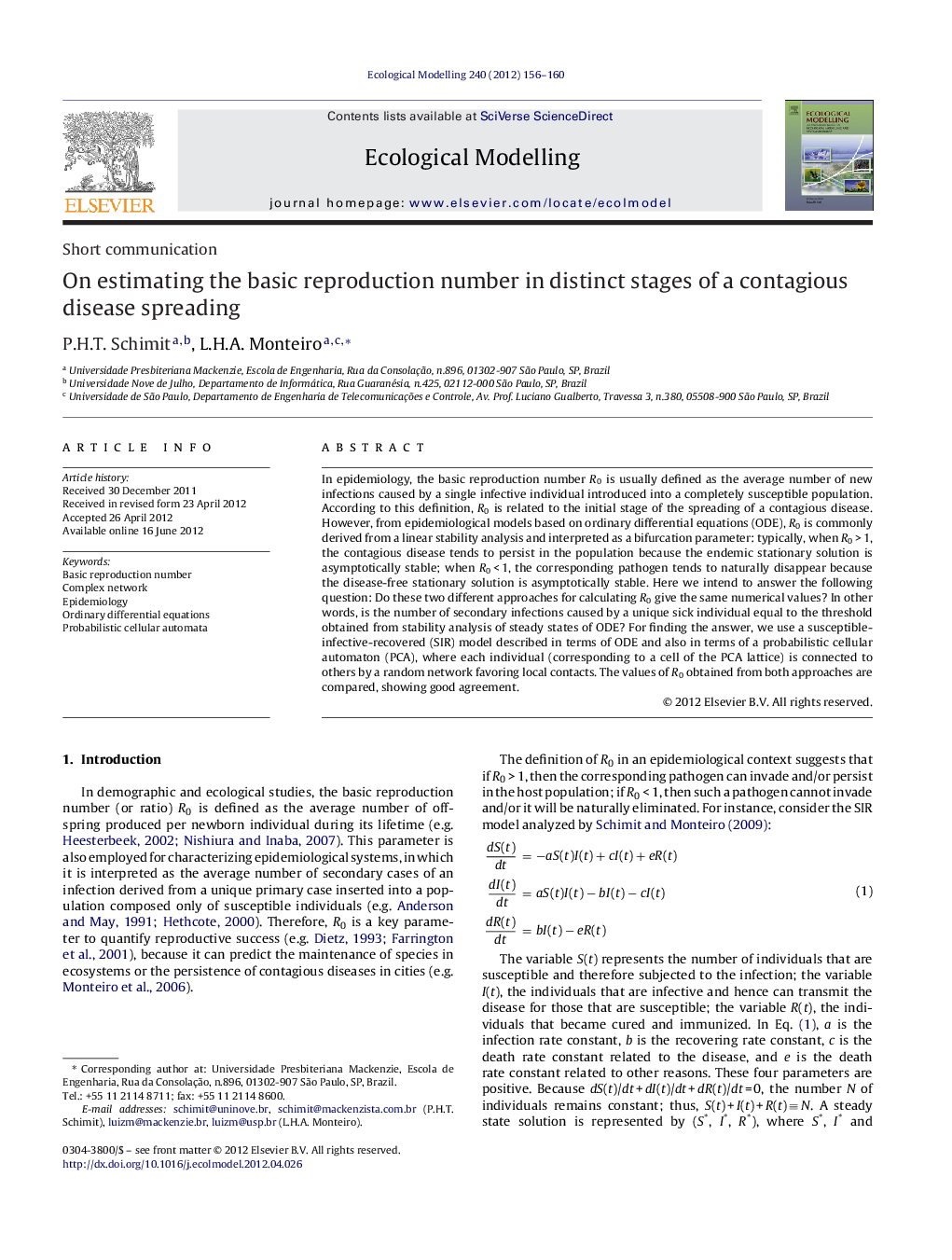| کد مقاله | کد نشریه | سال انتشار | مقاله انگلیسی | نسخه تمام متن |
|---|---|---|---|---|
| 4376421 | 1617505 | 2012 | 5 صفحه PDF | دانلود رایگان |

In epidemiology, the basic reproduction number R0 is usually defined as the average number of new infections caused by a single infective individual introduced into a completely susceptible population. According to this definition, R0 is related to the initial stage of the spreading of a contagious disease. However, from epidemiological models based on ordinary differential equations (ODE), R0 is commonly derived from a linear stability analysis and interpreted as a bifurcation parameter: typically, when R0 > 1, the contagious disease tends to persist in the population because the endemic stationary solution is asymptotically stable; when R0 < 1, the corresponding pathogen tends to naturally disappear because the disease-free stationary solution is asymptotically stable. Here we intend to answer the following question: Do these two different approaches for calculating R0 give the same numerical values? In other words, is the number of secondary infections caused by a unique sick individual equal to the threshold obtained from stability analysis of steady states of ODE? For finding the answer, we use a susceptible-infective-recovered (SIR) model described in terms of ODE and also in terms of a probabilistic cellular automaton (PCA), where each individual (corresponding to a cell of the PCA lattice) is connected to others by a random network favoring local contacts. The values of R0 obtained from both approaches are compared, showing good agreement.
► The basic reproduction number R0 is a key parameter in epidemiological studies.
► It is defined as the number of secondary infections caused by a single primary case.
► It can also be derived from models based on differential equations.
► Here, cellular automaton and complex network are used to model the host population.
► The values of R0 obtained from both ways are compared, showing good agreement.
Journal: Ecological Modelling - Volume 240, 10 August 2012, Pages 156–160